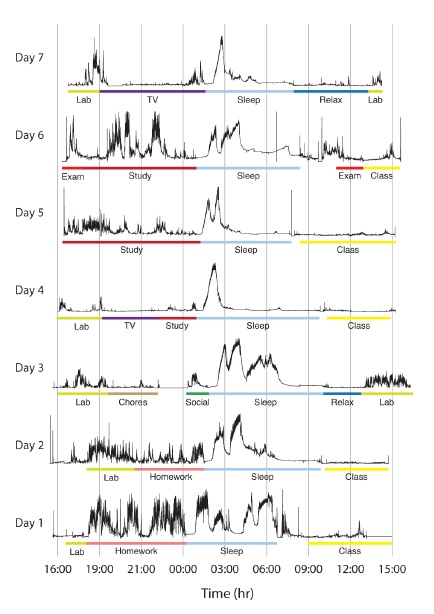Getting students to actively pay attention for an entire class and engage with material is a common challenge for teachers. Sometimes, material content isn’t stimulating for students, other times, students may be thinking about other things – whatever the reason, engaging classrooms is a continually evolving effort. One recently conducted study developed a wearable sensor that is capable of detecting electrodermal activity. Electrodermal activity can be correlated to the engagement of the sympathetic nervous system. The wearable sensor developed by MIT is helpful in conducting research on the sympathetic nervous system outside of laboratories and in the daily activities of its user.
“…the sympathetic nervous system stimulates increased metabolic output to deal with external challenges. As such, increased sympathetic activity (sympathetic arousal) elevates heart rate, blood pressure, and sweating, as well as redirects blood from the intestinal reservoir toward skeletal muscles, lungs, heart, and brain in preparation for motor action.” [1]

Figure 1. In Situ Electrodermal Activity Results [1]
This electrodermal activity monitor was tested in situ on a student who wore the sensor for 7 days. While the purpose of this study was to test the sensor’s capabilities, the outcome from the student was quite revealing in that, during his time in the classroom, his sympathetic nervous system was almost a flatline – similar to that of times when the subject was watching television. (See Figure 1) In other words, the student displayed barely any reaction or stimulation from classroom time as compared to other activities such as homework and lab time.
Although this data was collected from one individual whose learning styles and interests are unique, the data presented promotes an opportunity for educators to pause and consider the outcomes. The student receives more stimulation from doing chores than he did during class time. How can we engage students better during class time? How might reflection, change students’ attentiveness, stimulation, and reactions during class time?
Lauren Sepp is a graduate student in the department of Human Centered Design and Engineering at the University of Washington. She is also a research assistant for CPREE. (lsepp@uw.edu)
[1] Poh, Ming-Zher, Nicholas C Swenson and Rosalind W Picard. “A Wearable Sensor for Unobtrusive, Long-Term Assessment of Electrodermal Activity.” IEEE Transactions on Biomedical Engineering 57.5 (2010): 1-10.
[2] Herwig, Uwe, Tina Kaffenberger, Caroline Schell, Lutz Jancke, and Annette Bruhl. “Neural Activity Associated with Self-Reflection.” BMC Neuroscience 13.52 (2012). Web. 11 Nov. 2014. <http://link.springer.com/article/10.1186/1471-2202-13-52#page-1>.
